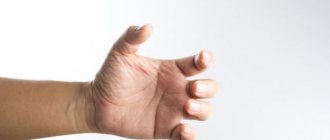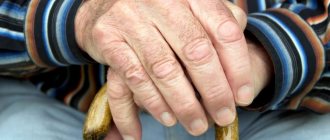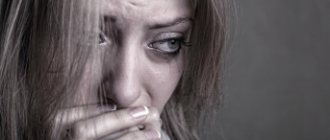June 23, 2021
Quality sleep is extremely important for the body. This affects the psychological and physical state of a person. During sleep, all functions of the body are restored, toxins are eliminated, the subconscious mind works intensively, and the information received during the day is absorbed. This process is as important as breathing and eating.
With the accelerated pace of life, people do not attach due importance to sleep. This is due to heavy workload, problems falling asleep, increased anxiety, leading to insomnia. But there are people who are prevented from getting enough sleep by a panicky fear of falling asleep for fear of dying in their sleep - hypnophobes. People with this fear may become exhausted as they become increasingly panicky as they prepare for bed. In order to fall asleep instantly, they need to use special drugs or rituals.
Over time, the fear of falling asleep begins to cause serious problems with physical and psychological health. It is important to work with this problem. In this article we will look at the common causes, symptoms and treatments for hypnophobia.
Causes of hypnophobia
- Constant nightmares are the main factor provoking the development of hypnophobia. When working with fear caused by difficult dreams, the most difficult task is to establish the true cause of the frightening dreams. According to experts, nightmares may be associated with unresolved internal conflicts or feelings of guilt. Anxiety that arises in the evening or at night can also affect the nature of dreams.
- Fear of dying in your sleep. People suffering from cardiovascular diseases and those who snore heavily are afraid of not waking up in the morning. Sudden cardiac arrest at night is not uncommon, and snoring can be a symptom of such a serious disease as obstructive sleep apnea syndrome (breathing arrest). With this disease, as a result of relaxation of the pharyngeal muscles and collapse of the respiratory tract, the breathing process of a sleeping person temporarily stops (for at least 10 seconds). The impetus for the development of a phobia is the unexpected death of a loved one in a dream.
- Fear of losing control over what is happening around and awareness of one’s vulnerability. The anxiety may be based on something called genetic memory. At all times, a sleeping person has been an easy prey for predators and enemies.
- A misfortune that occurred during sleep. Perhaps one day a hypnophobe woke up in an apartment engulfed in flames, or at night the home was destroyed by a natural disaster, and a person’s life was in danger.
- Living in a region where a man-made disaster or destructive natural phenomenon is possible, as well as in a zone of military conflict. For example, after the explosion at the Chernobyl nuclear power plant and the urgent evacuation from radiation-contaminated lands, the number of complaints about sleep problems and fear of falling asleep increased. The impetus for the development of the disorder was the shock caused by the tragedy. In the event of a military conflict, a person is afraid of falling asleep and dying from a shell hitting his home or when a building collapses.
- The desire to spend time on more important things or on another type of recreation.
- Close contact with a person suffering from hypnophobia. The phenomenon in which the fear of falling asleep occurs is called induced delusional disorder. With prolonged communication with an authoritative close relative or friend, a healthy person begins to develop the same delusional beliefs as the “carrier” of the phobia.
- Prolonged depression and excessive impressionability.
- A pathological connection between sleep and fear formed in the subconscious. Such a connection may arise due to frequent family quarrels, which greatly frightened the child and prevented him from falling asleep.
- Children's enuresis. If, after involuntary urination at night, the baby is severely scolded, punished or ridiculed, over time a persistent fear of falling asleep develops.
- Horror films, scary books, scary bedtime stories.
- Fear may be based on another phobic disorder - taphophobia, that is, the fear of falling into a lethargic sleep and being buried alive. However, with the current development of medicine, it is almost impossible to confuse lethargic sleep and death.
Mental reactions
Fear is an emotion that arises when an imaginary or real danger appears. This danger causes a state uncharacteristic for a person, leading to an outburst of feelings, and forces the individual to mobilize all his strength to avoid danger. In other words, fear is the body’s defensive reaction to a stressful situation.
Natural fear is inherent in nature , it works at the level of instincts and experience acquired over life. Even a child is born with so-called fear hormones. A newborn baby exhibits instinctive forms of defense when loud sounds occur or an object approaches unexpectedly. At the same time, the baby begins to show anxiety: suddenly freeze, throw up his arms, cry. This reaction is considered normal and even necessary.
But if anxiety arises in a situation that is conditionally safe, then this is already considered an anxiety disorder, that is, a painful mental state.
Manifestation of hypnophobia
As bedtime approaches, a person suffering from hypnophobia begins to experience increased anxiety. In order to be able to sleep, people exhaust themselves with excessive physical activity or use sedatives and sleeping pills.
In cases of severe phobic disorder, the patient tries to avoid sleep by any means. A person can remain without proper rest for several days. A striking example of the manifestation of hypnophobia is demonstrated in the film “Nightmares on Elm Street” . The fear of falling asleep and becoming a victim of a mystical killer who comes in dreams brought the main characters to physical exhaustion.
Strong emotional stress can overwhelm a person when talking about a dream and when thinking about it.
Sometimes you can notice that every time before a night's rest, a hypnophobe performs some rituals. Systematic implementation of certain actions helps reduce the level of emotional stress.
What is the danger of a phobia?
It is very difficult to get rid of hypnophobia on your own. After all, this fear is usually accompanied by various anxiety disorders, aggravated by physical symptoms. To get rid of a phobia once and for all, you need to consult a specialist in psychiatry. The main method of treatment is psychotherapy. During the sessions, the specialist will relieve anxiety and restlessness associated with thoughts about sleep. It will show that many fears and worries are not at all justified. During therapy, misconceptions about the consequences of sleep will be corrected. In some particularly advanced cases, the doctor may prescribe drug treatment.
It is necessary to create a friendly environment at home - none of the loved ones should make fun of the patient’s fears or play on his nerves. You need to show your support and understanding, because the fight against phobias requires enormous courage and strength.
For some people, fear of sleep is complicated by the fear of being alone at night. In this case, it is recommended to get a pet that will be nearby, giving its owner a feeling of security and need.
Physiological symptoms
Physiological symptoms are divided into primary and secondary. Primary are signs of the phobia itself, and secondary are its consequence and are caused by chronic lack of sleep.
Primary symptoms of hypnophobia:
- excessive sweating,
- shiver,
- cardiopalmus,
- rapid breathing or shortness of breath,
- nausea,
- thirst and dry mouth.
Secondary symptoms of hypnophobia:
- drowsiness, weakness, apathy, general malaise,
- problems with information perception, memory and thinking disorders,
- blurred vision and eye pain,
- difficulties with coordination of movements,
- throbbing headache
- cardiovascular diseases and pain in the heart area,
- excessive emotionality, tearfulness, increasing sensitivity.
Consequences of hypnophobia
Hypnophobia negatively affects a person’s physical and mental health, so it must be treated, and treatment must be timely. The more severe a phobic disorder develops, the more damage it causes to all systems of the human body .
With a chronic lack of sleep, the immune system is weakened, the information received during wakefulness is not properly processed and absorbed, the removal of toxic waste products from the brain is slowed down, the hormone melatonin is not produced, and there is no quality rest.
A person suffering from hypnophobia becomes exhausted both mentally and physically. Due to a general deterioration in health, panic attacks may become more frequent.
When to ask for help
It is not always possible to cope with fears and especially phobias on your own. If emotions are too strong and unpleasant, prevent you from living a normal life and are difficult to control, this is a reason to go to a psychiatrist, neurologist or psychologist.
You should also definitely seek help if you:
- experiencing severe anxiety and panic attacks;
- you can’t sleep because of fear;
- experience pronounced physical manifestations of fear: tachycardia, difficulty breathing, heart pain;
- Are you afraid to meet with friends in the evening, go to a corporate party or to the cinema just because you will have to spend part of the time in the dark.
Treatment of hypnophobia
When working with hypnophobia, it is very important to establish the true cause of fear. Otherwise, the patient may be prescribed the wrong treatment. For example, in the case of induced delusional disorder, in order to completely cure the “infected” person, it is enough to simply stop his contact with the “carrier” of the actual phobic disorder.
Other methods of working will not be effective. Induced delusional disorder is a very rare phenomenon, so specialists may miss the true cause of fear.
Hypnophobia can also be a symptom of thanatophobia or taphophobia. In this case, you need to work not with the fear of falling asleep, but with the underlying phobic disorder.
Therapeutic treatment
If the cause of the phobia is childhood fears, then group role-playing games and psychoanalysis have a good effect.
For a disorder caused by a traumatic experience in a person’s recent past, rational and cognitive behavioral therapy and an existential approach are used. The following are also used in the treatment process:
- neuromuscular relaxation methods,
- ideomotor therapy,
- sensory reproduction,
- autogenic training.
Yoga, meditation and aromatherapy can also help reduce anxiety.
Getting rid of clinophobia
Based on the fact that a phobia is an exaggeration of a real risk, it is important for a person to realize the presence of the problem and its absurdity. In most cases, clinophobes understand their situation themselves, but it happens that a person has to explain the absurdity of his fear.
Facts and evidence are used to make the clinophobe aware of the problem. The most popular types of therapy are :
- Impact. A behavioral method is used, in which the patient is under the influence of a frightening situation. The person is placed in a bedroom and, under the influence of medications, is forced to sleep. Over time, the amount of active drugs in the tablets decreases until the release of a substance that imitates medicinal properties.
- Desensitization. The method is based on teaching the patient to enjoy a frightening state. Since relaxation and fear are incompatible, it is believed that this will gradually prevent the fear reaction from arising. To achieve the goal, relaxation is used to reduce muscle tension.
- Modeling. The doctor uses the behavior suggestion technique, that is, together with the patient, he studies options for the development of various phobic situations, finding the most favorable ones.
- Implosive. The essence of this therapy is to deliberately immerse the clinophobe in memories to study the reasons for the appearance of his phobia. At the same time, various options are offered to get out of this situation with a favorable outcome for the psyche.
- Rational. An influence is applied based on logical arguments and explanations of the underlying reasons for the appearance of fear. As a result, the patient develops a clear understanding of the artificiality of fear.
- Hypnosis. Contrary to the common belief that hypnotherapy is simply manipulation, it actually makes a person aware and removes his psychological barriers. But it cannot be applied to all people. In general, a person should not With the help of hypnosis, a specialist influences the cause of fear on an unconscious level, helping to get rid of it forever.
- Cognitive therapy. The most commonly used form of treatment. It involves adjusting thoughts and reducing anxiety. The ultimate goal of this type of therapy is to rid the clinophobe of distorted ideas and incorrect perceptions of reality regarding the fear experienced.
- Medication. According to various studies, such treatment is effective only in the initial stages of the onset of a phobia. It is customary to treat a progressive disease using a combined method. The combination of drug therapy with another type always gives a positive result. The drugs used are antidepressants, anxiolytics, antipsychotics and tranquilizers. The use of medications should only be carried out under the guidance of a doctor, since incorrect doses can cause even greater harm to the body.
Researchers have noted that often even the most severe forms of clinophobia can be cured if the patient has someone who takes on the role of a “sleep partner.” This is the kind of person who can convince him that he will protect him from any negative impact during sleep or wake him up in the event of a disaster.
Drug treatment
In the case of a severe disorder, in which a person has a prolonged lack of sleep and serious physical exhaustion, sleeping pills and the hormone melatonin are prescribed. This allows the patient to get at least a little sleep and regain his strength.
Symptomatic drug treatment can be prescribed for disturbances in the functioning of organs or body systems. However, the main work should be aimed at ridding the patient of irrational fear , and not at treating secondary symptoms of phobia.
Ambient atmosphere
When working with hypnophobia, it is important what attitude towards the patient is shown by his relatives. If an anxious person feels more confident in the presence of loved ones, then one of the relatives should stay close to the hypnophobe during his sleep.
Criticism and ridicule can aggravate the emotional stress of the patient. Having a pet can help reduce anxiety. A favorite activity or hobby helps to partially repress negative thoughts.
How to improve your sleep quality?
- The sleeping place should be comfortable.
- Before going to bed, you need to ventilate the room well.
- Your daily diet should include more fruits and foods containing zinc, copper, calcium, iron and magnesium. Additionally, you can take vitamins.
- It is necessary to give up alcohol and quit smoking.
- Sports and evening walks will help reduce the likelihood of painful dreams.
- You should avoid books, films and games with scary content.
How to cope with the fear of the dark on your own as an adult
Experts offer What to know about nyctophobia several options.
Practice muscle relaxation
In the 1920s, American scientist and physician Edmund Jacobson developed What is Jacobson's Relaxation Technique? progressive muscle relaxation, which helps cope with anxiety, depression, stress and phobias. Jacobson found that to achieve deep relaxation, you need to consistently tense your muscles and then relax them.
You can start with your hands, then move to your face, from there to your neck, back and chest, and finally to your legs. In this case, it is recommended to strongly tense the muscles of the part of the body on which you are currently focused for 5-10 seconds, and then relax and focus on this sensation for 15-20 seconds. And then move on to the next area until the whole body relaxes and the panic subsides.
Try it











